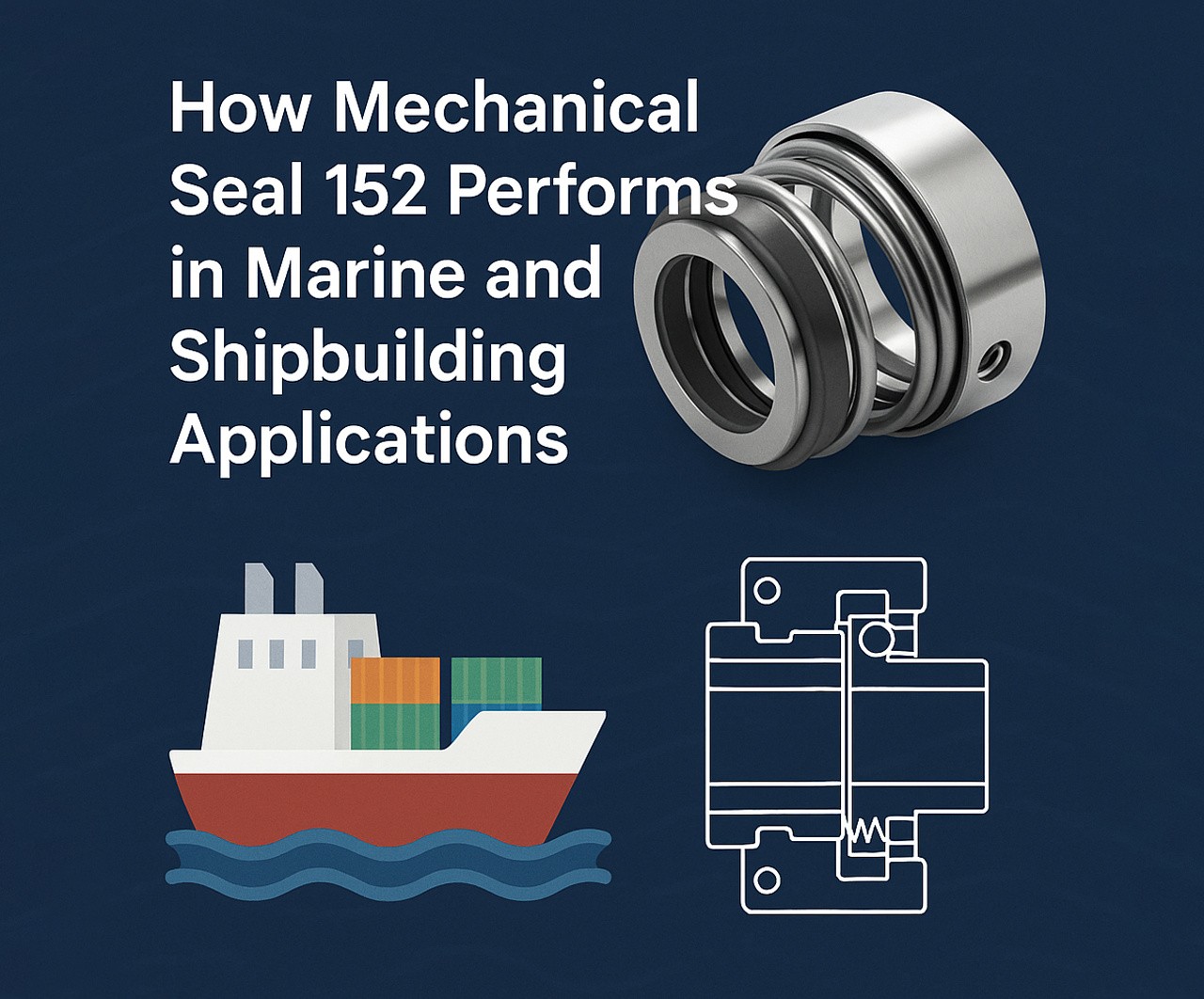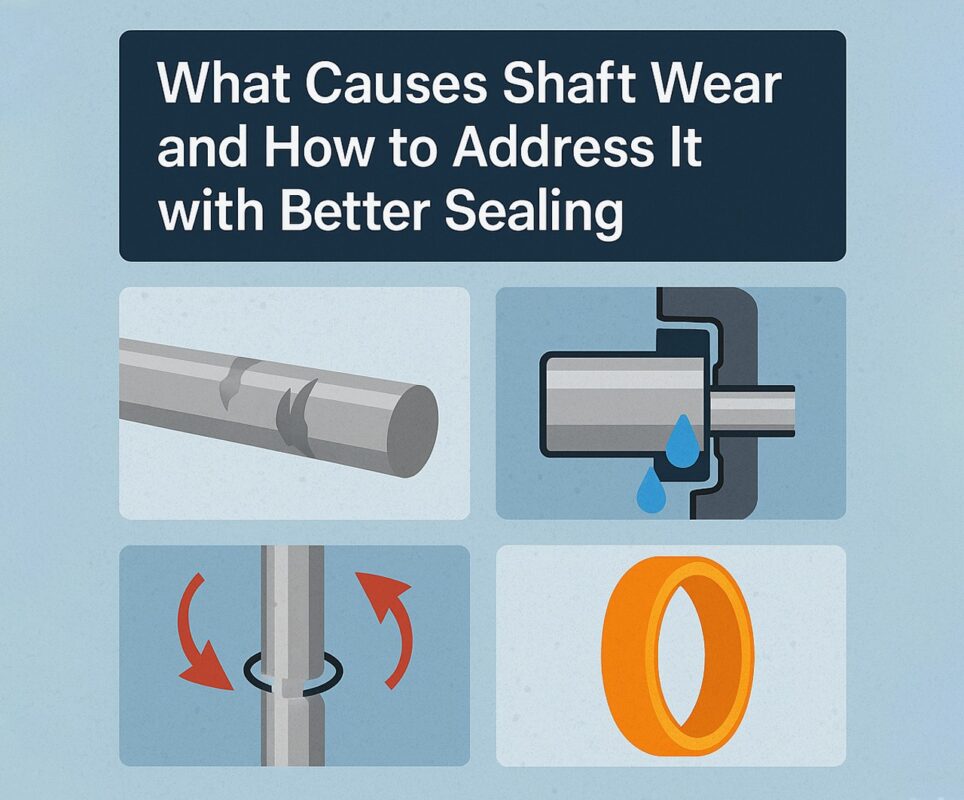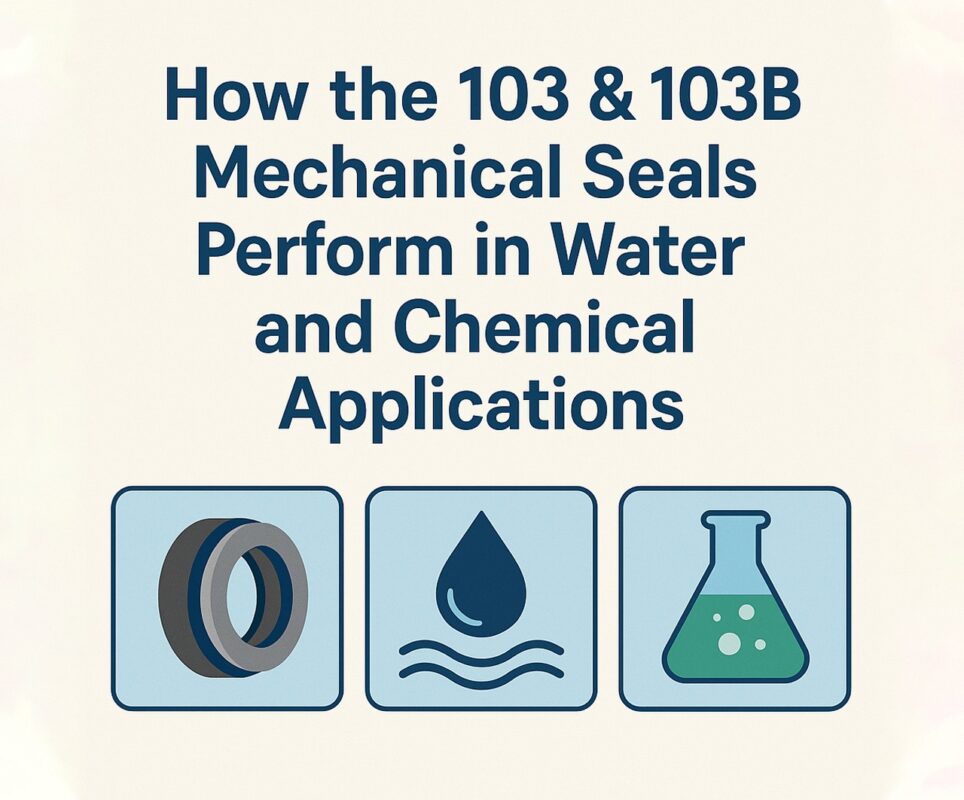Marine and shipbuilding operations demand durable, high-performance sealing systems that can handle corrosive environments, extreme pressures, and continuous vibration. That’s where face mechanical seal, gland packing mechanical seal, and mechanical sleeve seal technologies come into play—especially when paired with the reliable and robust capabilities of Mechanical Seal 152. In environments where reliability equals safety and efficiency, Mechanical Seal 152 proves itself as a preferred solution for propulsion systems, bilge pumps, cargo handling equipment, and more. Know more..
Understanding Mechanical Seal 152
Mechanical Seal 152 is a balanced, double-spring, O-ring mounted rotating seal that provides exceptional sealing capability in tough operating environments. Designed primarily for medium- to high-duty rotating equipment, it is widely implemented in marine pump systems and fluid transfer machinery.
Key Features of Mechanical Seal 152:
- Compact cartridge design
- Springs out of the fluid path
- Adaptable for both horizontal and vertical pump installations
- Compatible with corrosive seawater and chemical media
- Functions with minimal axial space
It can be configured as a face mechanical seal or adapted for a mechanical sleeve seal design, making it incredibly versatile across a range of shipboard applications.
Why Seal Performance Is Crucial in Marine Settings
Ships and offshore structures are exposed to continuous motion, variable loads, and corrosive atmospheres. These conditions introduce several sealing challenges:
- Constant vibration and shaft misalignment
- Saltwater-induced corrosion
- Oil or fluid contamination risks
- High operating pressures in pump systems
Marine engineers have historically relied on gland packing mechanical seals for many applications. However, these require frequent maintenance and don’t provide the same reliability as mechanical seals like the 152 series.
Face Mechanical Seal vs. Gland Packing Mechanical Seal
Let’s compare the modern face mechanical seal (such as the 152) with traditional gland packing mechanical seal setups:
| Feature | Face Mechanical Seal (152) | Gland Packing Mechanical Seal |
| Seal Integrity | High | Moderate |
| Maintenance Frequency | Low | High |
| Leakage Control | Minimal | Controlled leakage required |
| Power Consumption | Lower (less friction) | Higher (constant drag) |
| Wear on Shaft | Minimal | Higher |
| Cost Over Time | Lower | Higher due to frequent replacement |
Mechanical Seal 152 drastically improves sealing performance, especially when integrated into propulsion cooling pumps, ballast systems, and firewater pumps.
Where Mechanical Seal 152 Fits in Shipbuilding
1. Bilge and Ballast Pumps
These are vital systems that must handle both clean and contaminated water. The mechanical sleeve seal version of Mechanical Seal 152 resists wear and misalignment, maintaining performance across fluctuating pressures.
2. Seawater Cooling Systems
Saltwater is corrosive and abrasive. The 152’s face materials and elastomers are customizable for seawater resistance. Its double-spring design keeps the face mechanical seal pressed tightly, ensuring continuous operation.
3. Cargo Transfer Pumps
Tanker ships use these pumps to handle oil, fuel, or chemicals. Mechanical Seal 152’s high-pressure resistance and chemical compatibility make it a preferred alternative to standard gland packing mechanical seal options.
4. Firefighting and Emergency Pumps
These pumps must function immediately during emergencies. The low-friction and high-reliability design of the 152 ensures readiness even after long periods of inactivity.
5. Propulsion Systems
Main engine shaft seals benefit from the mechanical sleeve seal configuration of the 152, reducing wear and resisting vibration-induced misalignment.
Material Configuration Options
Mechanical Seal 152 can be configured with various face and elastomer materials to suit different marine fluids and temperatures:
- Faces: Carbon, Silicon Carbide, Tungsten Carbide
- Elastomers: EPDM, NBR, FKM, FFKM (for chemical resistance)
- Hardware: Stainless steel or Super Duplex for saltwater resistance
The modularity makes it ideal for both new ship designs and retrofitting older vessels currently using gland packing mechanical seals.
Installation and Maintenance Advantages
Mechanical Seal 152 simplifies maintenance thanks to its cartridge-style construction:
- No need to measure spring compression
- Can be installed without dismantling the entire pump
- Less sensitive to misalignment
- Minimizes seal face damage during handling
With proper alignment, lubrication, and cooling, the 152 can outlast multiple gland packing mechanical seals, reducing both downtime and labor costs.
Real-World Case Study: Chemical Tanker Retrofit
A shipping company retrofitted 15 chemical tanker cargo pumps with Mechanical Seal 152 units. Previously relying on gland packing mechanical seals, the ships faced constant leakage and shaft scoring.
Post-Upgrade Results:
- Seal failure rate dropped by 85%
- Shaft wear eliminated entirely
- Annual maintenance costs reduced by 40%
- Improved environmental compliance with MARPOL regulations
Why Mechanical Sleeve Seals Matter
The mechanical sleeve seal adaptation of Mechanical Seal 152 offers added protection for pump shafts. In high-vibration marine environments, this feature:
- Extends shaft life
- Improves alignment control
- Reduces repair time during seal replacement
Sleeve configurations are particularly valuable in dredging vessels, offshore platforms, and tugs where shaft wear is a major concern.
Innovations and Adaptability
Modern upgrades to the 152 design now include:
- Integrated bearing support for better radial stability
- Anti-clog features for contaminated water environments
- Dual pressurization systems for handling hazardous media
- Remote monitoring integration for predictive maintenance
This evolution of the face mechanical seal model ensures the 152 series stays ahead of future marine standards.
Compliance and Certification
Mechanical Seal 152 can be manufactured to meet marine and offshore regulations:
- ABS, DNV, Bureau Veritas approvals
- Compatible with IMO standards for environmental safety
- Certified elastomers for potable water and food handling systems
This makes it suitable for both commercial and naval marine applications.
Environmental and Operational Impact
Leakage from faulty seals contributes to pollution and operational hazards. Replacing gland packing mechanical seals with 152 mechanical seals:
- Reduces oil or bilge discharge into marine environments
- Enhances fuel and fluid efficiency
- Increases equipment lifespan and reduces waste
Given increasing scrutiny on emissions and environmental responsibility, using Mechanical Seal 152 aligns with both performance and ESG goals.
Final Thoughts: The Modern Marine Seal Solution
In today’s shipbuilding industry, where efficiency and environmental impact are just as important as mechanical performance, Mechanical Seal 152 is an indispensable tool. As a flexible system that can be configured as a face mechanical seal, a drop-in replacement for outdated gland packing mechanical seals, or a durable mechanical sleeve seal, it delivers long-term value.
From bilge pumps to cargo systems, the 152 handles marine conditions with strength, stability, and ease of maintenance. If you’re designing, retrofitting, or upgrading a vessel, choosing this seal means fewer leaks, lower costs, and higher peace of mind. And that’s something every marine engineer can get behind.




